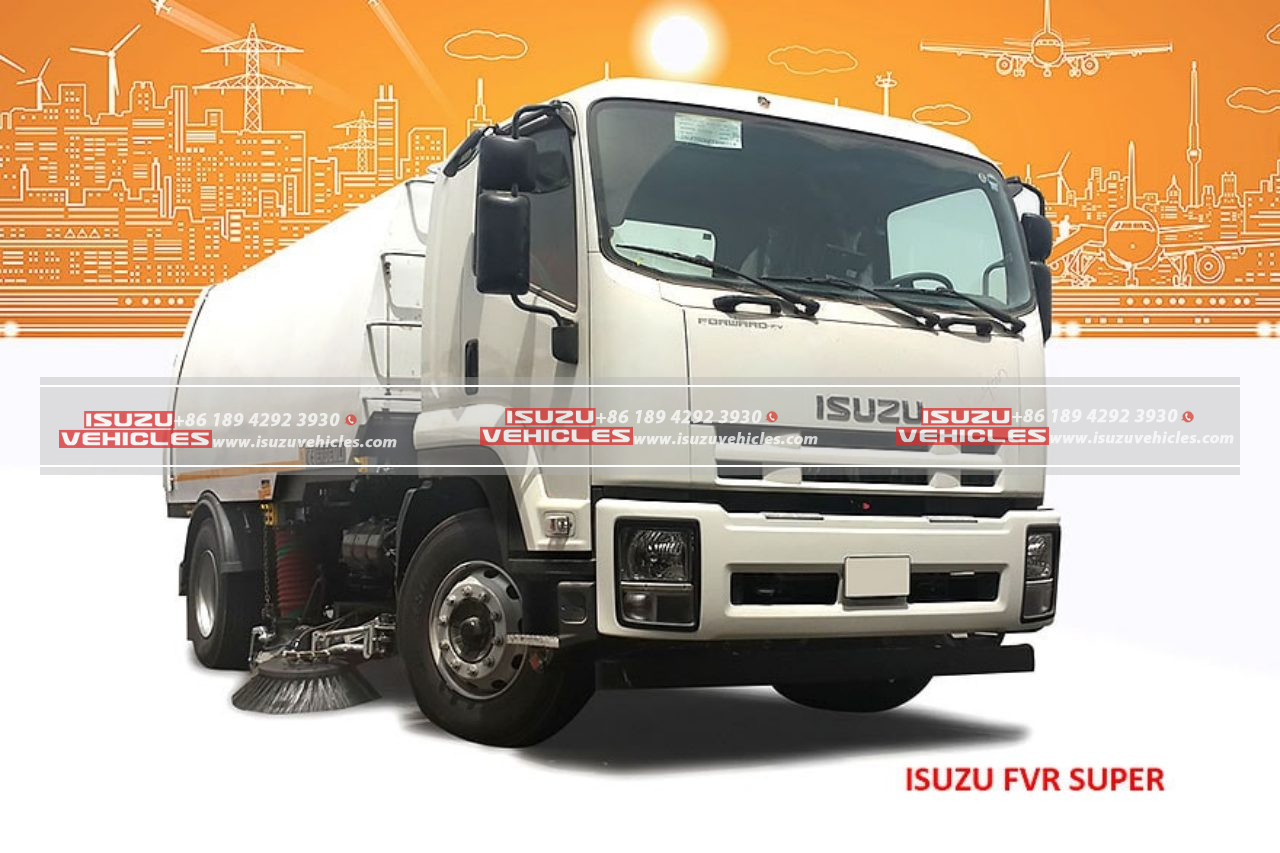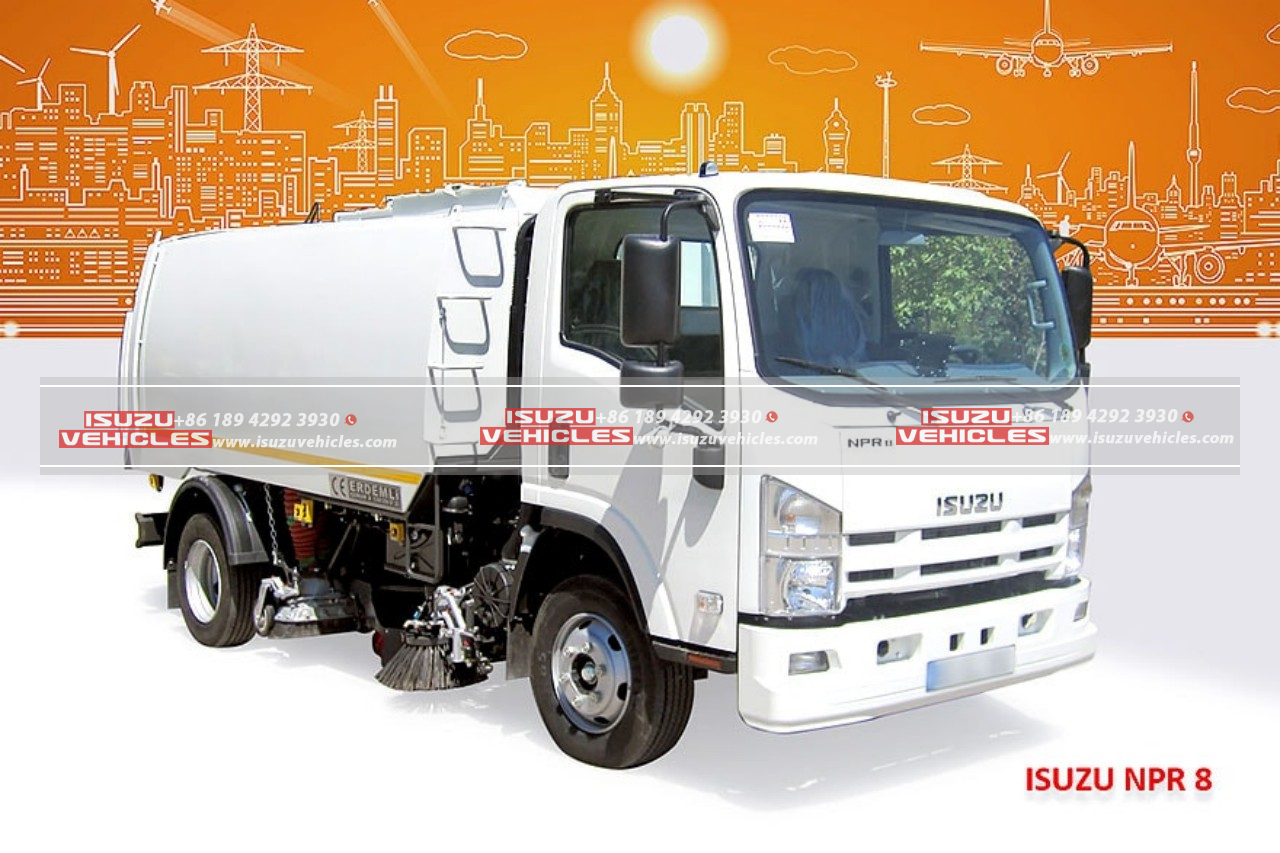Maintaining ISUZU Sweeper Trucks: Cleaning Efficiency Unveiled
Maintaining ISUZU sweeper trucks is essential for ensuring optimal cleaning efficiency and prolonging the lifespan of the equipment. These robust machines are designed to tackle various street cleaning tasks, from urban roads to industrial sites. To keep them in top shape, a comprehensive maintenance regimen is crucial. This article delves into the best practices for maintaining ISUZU sweeper trucks, highlighting the importance of regular inspections, proper cleaning techniques, timely part replacements, and the benefits of preventive maintenance.
Understanding the Components
ISUZU sweeper trucks are complex machines comprising several key components, each playing a crucial role in their overall functionality. The primary components include the sweeping mechanism, the debris hopper, the hydraulic system, the engine, and the chassis. Each of these parts requires specific attention to ensure the truck operates efficiently.
1. Sweeping Mechanism: The brushes and vacuum system form the heart of the sweeper truck. Regular inspection and cleaning of these components are essential to maintain their effectiveness. Worn-out brushes should be replaced promptly to ensure optimal debris collection.
2. Debris Hopper: The debris hopper collects and stores the waste swept from the streets. It should be regularly emptied to prevent overloading, which can strain the hydraulic system and reduce efficiency. Inspecting the hopper for damage and ensuring it is free of obstructions will maintain smooth operations.
3. Hydraulic System: The hydraulic system powers various functions of the sweeper truck, including the movement of the brushes and the operation of the debris hopper. Regular checks for leaks, proper fluid levels, and the condition of hoses and seals are vital to prevent breakdowns.
4. Engine: The engine powers the entire vehicle and its auxiliary systems. Routine oil changes, air filter replacements, and fuel system inspections are necessary to keep the engine running smoothly and efficiently.
5. Chassis: The chassis provides the structural framework for the sweeper truck. Regular inspections for signs of wear, corrosion, or damage are crucial. Proper lubrication of moving parts and ensuring that all bolts and fasteners are secure will enhance the vehicle’s durability.

Best Practices for Maintenance
1. Scheduled Inspections and Maintenance: Establishing a routine maintenance schedule is the cornerstone of effective sweeper truck upkeep. Regular inspections help identify potential issues before they escalate into major problems. A maintenance log can track completed tasks, upcoming services, and any issues noted during inspections.
2. Cleaning Techniques: Proper cleaning of the sweeper truck is essential to maintain its performance. After each use, thoroughly clean the brushes, vacuum system, and debris hopper to remove any accumulated dirt and debris. This practice prevents clogs and ensures that the equipment is ready for the next task. Additionally, regular washing of the exterior and undercarriage will prevent corrosion and enhance the truck’s longevity.
3. Timely Part Replacements: Parts such as brushes, filters, and hydraulic hoses have a finite lifespan. Replacing them at the recommended intervals prevents breakdowns and maintains the sweeper truck’s efficiency. Using genuine ISUZU parts ensures compatibility and reliability.
4. Lubrication and Fluid Checks: Proper lubrication of moving parts reduces friction and wear, extending the life of the components. Regularly check and top up fluids, including engine oil, hydraulic fluid, and coolant. Adhering to the manufacturer’s recommendations for fluid types and intervals is essential.
5. Training and Operator Responsibility: Proper training for operators is crucial to the maintenance process. Operators should be familiar with the truck’s functions and maintenance requirements. Encouraging operators to perform pre-and post-operation checks will help identify issues early and foster a sense of responsibility for the equipment’s upkeep.
Preventive Maintenance: A Proactive Approach
Preventive maintenance goes beyond regular inspections and part replacements. It involves anticipating potential problems and addressing them before they occur. This proactive approach can significantly reduce downtime and repair costs while enhancing the sweeper truck’s efficiency and reliability.
1. Condition Monitoring: Utilizing technology to monitor the condition of critical components can provide early warnings of potential failures. Sensors and diagnostic tools can detect issues such as abnormal vibrations, temperature fluctuations, or fluid leaks. Addressing these problems promptly prevents more extensive damage.
2. Comprehensive System Checks: Periodic comprehensive system checks, conducted by qualified technicians, can uncover hidden issues that routine inspections might miss. These checks should include detailed assessments of the engine, hydraulic system, electrical components, and structural integrity.
3. Software Updates and Calibration: Modern ISUZU sweeper trucks may be equipped with advanced software and control systems. Keeping these systems up to date ensures optimal performance and can enhance the truck’s efficiency. Calibration of sensors and control modules should be performed according to the manufacturer’s recommendations.
4. Environmental Considerations: Sweeper trucks often operate in harsh environments, exposed to dust, debris, and various weather conditions. Taking environmental factors into account when planning maintenance can prevent issues related to corrosion, clogging, and wear. For instance, trucks operating in coastal areas may require more frequent washing and corrosion protection measures.
The Benefits of Proper Maintenance
Investing time and resources into maintaining ISUZU sweeper trucks yields numerous benefits that extend beyond the immediate operational efficiency of the vehicles.
1. Enhanced Cleaning Efficiency: Well-maintained sweeper trucks perform their tasks more effectively, ensuring that streets and industrial sites are thoroughly cleaned. This efficiency reduces the need for repeated passes and minimizes fuel consumption and operating costs.
2. Reduced Downtime: Preventive maintenance and timely part replacements reduce the likelihood of unexpected breakdowns. This reliability ensures that the sweeper trucks are available for use when needed, improving overall productivity.
3. Extended Lifespan: Proper maintenance extends the lifespan of the sweeper trucks, maximizing the return on investment. Well-maintained trucks can serve reliably for many years, reducing the frequency of costly replacements.
4. Cost Savings: While maintenance requires an initial investment, it ultimately saves money by preventing major repairs, reducing downtime, and extending the lifespan of the equipment. The cost of regular maintenance is significantly lower than the expenses associated with major breakdowns and replacements.
5. Safety and Compliance: Regular maintenance ensures that sweeper trucks operate safely and comply with environmental and safety regulations. Well-maintained equipment is less likely to experience malfunctions that could pose risks to operators, pedestrians, and other vehicles.

Conclusion
Maintaining ISUZU sweeper trucks is essential for achieving cleaning efficiency and prolonging the lifespan of these valuable machines. By understanding the components, following best practices for maintenance, and adopting a proactive approach to preventive maintenance, operators can ensure that their sweeper trucks operate at peak performance. The benefits of proper maintenance extend beyond immediate operational efficiency, encompassing cost savings, enhanced safety, and improved reliability. Investing in the upkeep of ISUZU sweeper trucks is an investment in the long-term success and effectiveness of street cleaning operations.
